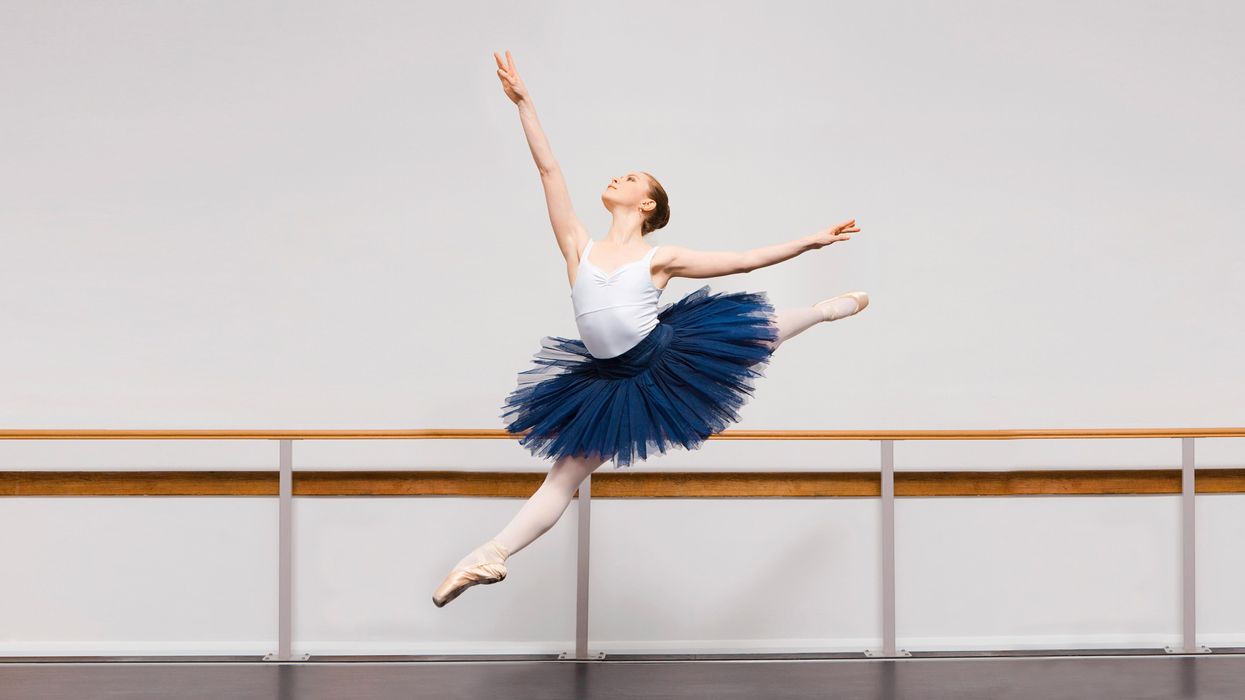
As a professional dancer, LeeWei Chao excelled at allégro movement; now he shares his extensive knowledge with upper-level students at Oregon Ballet Theatre School, where he also teaches OBT2. Below, Chao breaks down sissonne fermé en avant to help you achieve a dynamic and polished movement quality.

Back Leg Versus Front Leg
A sissonne is a darting jump; except when landing, both legs must work in unison in order for the step to be performed correctly. "A highlight of sissonne fermé is the front leg," says Chao. "The front leg needs to push and reach out, even more than the back leg. At barre we do tendus, jetés and frappés—you need to use that action in sissonne. I like to describe to students that the front foot is almost like a cheetah when it runs: quick and darting."
Chao frequently sees dancers over-prioritize the height of the back leg. "When you push the back leg more than the front leg, you kick the arabesque leg high and push your body forward; the jump almost becomes falling forward."
Engaging the Core and Back
When you spring into the air for a sissonne, you use your plié to push both feet off the floor. But you also need to use your core, says Chao. "A lot of dancers have trouble making sissonne travel. You need your core muscles to make the movement shift," says Chao. Engaging the abdominals will help you maintain control of the upper body without losing the burst of energy needed for the jump.
Chao cautions dancers not to let the movement pump or thrust from the chest. "When you think about jumping up, and use the chest to push up, it causes the body to fall back. This makes it hard to push off the floor. Think more of using the back and not the chest." Chao continues, "When you push off the floor, imagine the arms like two wings from the upper back working at the same time—just like a bird when it flies."
Soften the Arms on the Landing
Speaking of port de bras, Chao often notices dancers struggling with their first arabesque arms in a sissonne en avant. "Sometimes the side arm goes above shoulder height, which makes it hard for dancers to find their balance on the landing. Adjust the side arm in the first arabesque line to be a little below shoulder height."
To facilitate a controlled landing, Chao asks dancers to soften their elbows as they plié. This subtle motion helps establish the coordination of the arms and legs. "Some people keep the arms so straight when they land, but I think the elbows need to match the landing," says Chao. "Make them a little soft so that the landing feels weightless."
Connect to Music and Emotion
Remember that the quality of a sissonne fermé can be different depending on the exercises. "Sissonne can be used in adagio, not just in allégro," says Chao. "When dancers begin to use sissonne fermé en avant in different ways, they need to really show that the movement has an emotion." Even within Swan Lake there is a noticeable difference between the sissonnes that Odette performs in her Act II solo compared to the sissonnes that Odile dances in her Act III variation. "When you use the step to connect to the music, it should be like a channel to different emotions and expression."
Finally, Chao notes: "A lot of people just do steps without thinking, but how you think about movement is important. There are beautiful dancers, but you also want to see beautiful artists."
from Pointe https://ift.tt/3tYXxb8

ليست هناك تعليقات:
إرسال تعليق